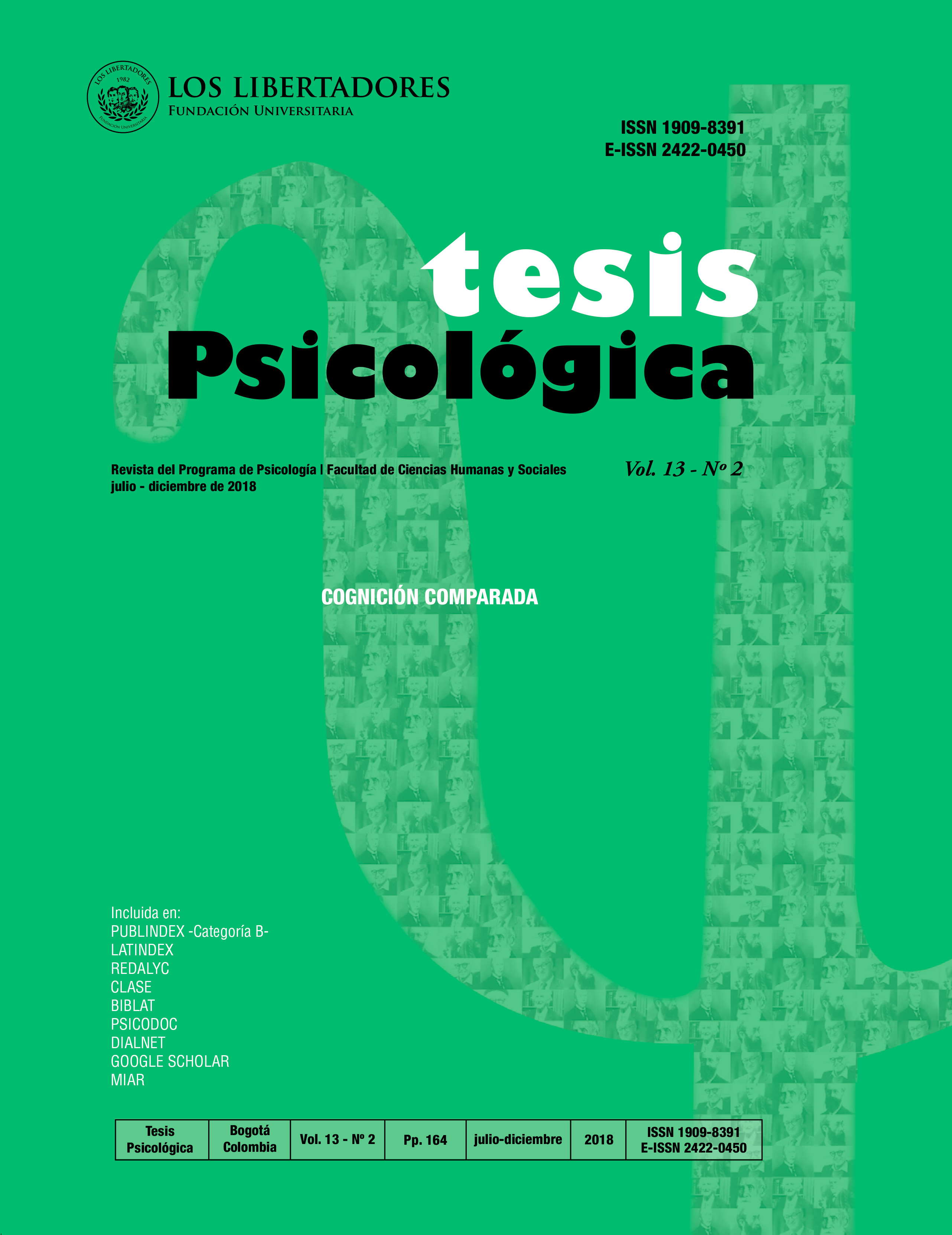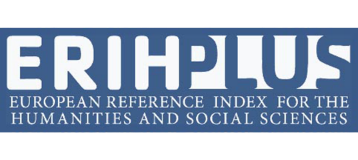Modelo experimental en anfibios:unidimensionalidad del procesamientode estímulos apetitivos y aversivos en elaprendizaje asociativo
DOI:
https://doi.org/10.37511/tesis.v13n2a2Resumen
En el condicionamiento clásico, un animal es expuesto a un estímulo neutro (estímulo condicionado) seguido de un estímulo apetitivo o aversivo (estímulo incondicionado). Con sucesivas repeticiones de esta asociación, el animal responderá frente al estímulo neutro como si se tratara del estímulo incondicionado. Este fenómeno ha sido ampliamente explorado en distintas clases zoológicas; desde moluscos hasta humanos. En la mayoría de los casos, los estímulos incondicionados apetitivos y aversivos corresponden a vías sensoriales diferentes: el es-tímulo apetitivo típicamente utilizado es la comida y excitará mayormente los receptores relacionados con el sentido del gusto; el estímulo aversivo típico es la descarga eléctrica excitando las vías táctiles y nociceptivas. Los estudios en anfibios, en particular el sapo terrestre, reproducen en buena medida los hallazgos en otras es-pecies animales, pero tienen características que los hacen únicos al poseer receptores a electrolitos en su piel que intervienen en la regulación del balance hidrosalino de su cuerpo. Un sapo expuesto a una solución salina levemente hipertónica (concentración menor a 250 mM de NaCl), gana peso y exhibe conductas de aproxima-ción, al contrario, si la solución salina es altamente hipertónica (concentración superior a 400 mM de NaCl), pierde peso y exhibe conductas de escape. De esta forma, un mismo estímulo (solución salina de NaCl), actúa como estímulo apetitivo o aversivo dependiendo de su concentración. Esta particularidad ha sido denominada unidimensionalidad de los estímulos motivacionales. El presente trabajo describe los procedimientos y revisa los resultados de estudios de aprendizaje asociativo en sapos, resaltando el uso de este modelo experimental para el estudio de los posibles mecanismos neurales implicados en el procesamiento de señales ambientales apetitivas y aversivas.Descargas
Referencias
Bentley, P. J. (1966). Adaptations of Amphibia to arid environments. Science, 152, 619-623.
Bingman, V. P. & Muzio, R. N. (2017). Reflections on the Structural-Functional Evolution of the Hippocampus: What is the Big Deal about a Dentate Gyrus? Brain, Behavior and Evolution, 90, 53-61.
Brush, F. R. (1971). Aversive conditioning and learning. New York: Academic Press.
Campbell, B. A. & Masterton, F. A. (1969). Psychophysics of punishment. En B. A. Campbell & R. M. Church (eds.), Punishment and aversive behavior (pp. 3-42). New York: Appleton-Century-Crofts.
Christensen, C. U. (1974). Adaptations in the water economy of some anuran Amphibia. Comparative Biochemistry and Physiology, 47A, 1035-1049.
Cole, S., Stone, A. D. & Petrovich, G. D. (2017). The dorsomedial striatum mediates Pavlovian appetitive conditioning and food consumption. Behavioral Neuroscience, 131(6), 447-453. doi: 10.1037/bne0000216
Corbit, L. H. & Janak, P. H. (2010). Posterior dorsomedial striatum is critical for both selective instrumental and Pavlovian reward learning. European Journal of Neuroscience, 31(7), 1312-1321.
Daneri, M. F., Papini, M. R. & Muzio, R. N. (2007). Common toads (Bufo arenarum) learn to anticipate and avoid hypertonic saline solutions. Journal of Comparative Psychology, 121, 419-427.
Duellman, W. E. & Trueb, L. (1994). Biology of amphibians. Baltimore and London: Johns Hopkins University Press.
Duvarci, S. & Pare, D. (2014). Amygdala microcircuits controlling learned fear. Neuron, 82, 966-980.
Guénette, S. A., Giroux, M. C. & Vachon, P. (2013). Pain perception and anaesthesia in research frogs. Experimental Animals, 62(2), 87-92.
Hall, I. C., Ballagh, I. H. & Kelley, D. B. (2013). The Xenopus amygdala mediates socially appropriate vocal communication signals. Journal of Neuroscience, 33, 14534-14548.
Hershkowitz, M. & Samuel, D. (1973). The retention of learning during metamorphosis of the crested newt (Triturus cristatus). Animal Behaviour, 21(1), 83-85.
Hoffman, A. & Lico, M. C. (1972). Autonomic and motor responses to electrical stimulation of the toad's brain. Physiology and Behavior, 8, 1039-1043.
Huang, A. C. W., Shyu, B-C., Hsiao, S., Chen, T-C. & He, A. B-H. (2013). Neural substrates of fear conditioning, extinction, and spontaneous recovery in passive avoidance learning: A c-Fos study in rats. Behavioural Brain Research, 237, 23-31.
Iurman, M. G. & Muzio, R. N. (2010). Efectos del Amiloride sobre la recaptación de agua a diferentes niveles de deshidratación en el sapo común. XI Congreso Argentino de Herpetología. Buenos Aires.
Jarrard, L. E. & Isaacson, R. L. (1965). Hippocampal ablation in rats: Effects of intertrial interval. Nature, 207, 109-110.
Jarrard, L. E., Isaacson, R. L. & Wickelgren, W. O. (1964). Effects of hippocampal ablation and intertrial interval on acquisition and extinction of a runway response. Journal of Comparative and Physiological Psychology, 57, 442-445.
Jellestad, F. K. & Bakke, H. K. (1984). Passive avoidance aer ibotenic acid and radio frequency lesions in the rat amygdala. Physiology and Behavior, 34, 299-305.
Johansen, J. P., Cain, C. K., Ostroff, L. & LeDoux, J. E. (2011). Molecular mechanisms of fear learning and memory. Cell, 147, 509-524.
Karten, H. J. (2015). Vertebrate brains and evolutionary connectomics: On the origins of the mammalian ‘neocortex’. Philosophical Transactions of the Royal Society B: Biological Sciences, 370, 1-12. doi: 10.1098/ rstb.2015.0060
Kravitz, A.V. & Kreitzer, A. C. (2012). Striatal mechanisms underlying movement, reinforcement, and punishment. Physiology, 27, 167-177.
Laberge, F., Feldhoff, R. C., Feldhoff, P. W. & Houck, L. D. (2008). Courtship pheromone-induced c-Fos-like immunolabeling in the female salamander brain. Neuroscience, 151, 329-339.
Laberge, F., Mühlenbrock-Lenter, S., Grunwald, W. & Roth, G. (2006). Evolution of the Amygdala: New insights from studies in amphibians. Brain, Behavior and Evolution, 67, 177-187.
Lascano, E., Segura, E. T. & Ferrario, J. A. (1971). Organización anatómica del encéfalo del Bufo arenarum Hensel. Revista de la Sociedad Argentina de Biología, 47, 70-88.
Llinás, R. & Precht, W. (1976). Frog Neurobiology. A Handbook. Berlin: Springer-Verlag.
Loza, M. A. (1998). Comportamiento del anfibio anuro Bufo arenarum (sapo común) frente a soluciones externas de diferente osmolaridad. (Tesis de Licenciatura). Facultad de Ciencias Exactas y Naturales, Universidad de Buenos Aires, Argentina.
Mackintosh, N. J. (1974). The Psychology of Animal Learning. New York: Academic Press.
Macphail, E. M. (1982). Brain and Intelligence in Vertebrates. Oxford: Claredon Press.
Millan, M. J. (1999). The induction of pain: an integrative review. Progress in Neurobiology, 57(1), 1-164.
Moore, A. R. & Welch, J. C. (1940). Associative hysteresis in larval Amblystoma. Journal of Comparative Psychology, 29(2), 283-292.
Moreno, N. & González, A. (2004). Localization and connectivity of the lateral amygdala in anuran amphibians. Journal of Comparative Neurology, 479, 130-148.
Moreno, N. & González, A. (2006). The common organization of the amygdaloid complex in tetrapods: new concepts based on developmental, hodological and neurochemical data in anuran amphibians. Progress in Neurobiology, 78, 61-90.
Moreno, N. & González, A. (2007). Evolution of the amygdaloid complex in vertebrates, with special reference to the anamnio-amniotic transition. Journal of Anatomy, 211, 151-163.
Mühlenbrock-Lenter, J., Endepols, H., Roth, G. & Walkowiak, W. (2005). Immunohistological characterization of striatal and amygdalar structures in the telencephalon of the fire-bellied toad Bombina orientalis. Neuroscience, 134, 705-719.
Muzio, R. N. (1999). Aprendizaje instrumental en anfibios. Revista Latinoamericana de Psicología, 31(1), 35-47.
Muzio, R. N. (2013). Aprendizaje en anfibios, el eslabón perdido: Un modelo simple cerebral en el estudio de conductas complejas. Cuadernos de Herpetología, 27(2), 87-100.
Muzio, R. N., Daneri, M. F., & Sotelo, M. I. (2017). Aprendizaje y memoria espacial en anfibios: consideraciones generales y aspectos evolutivos. En J. Nieto., & R. Bernal-Gamboa (Eds.), Estudios Contemporáneos en Cognición Comparada (pp. 111-178). México: Universidad Nacional Autónoma de México.
Muzio, R. N., Daneri, M. F., & Sotelo, M. I. (en prensa). Los anfibios como modelo experimental para el estudio de la evolución de la cognición espacial y sus bases neurales. Revista Tesis Psicológica.
Muzio, R. N., Ruetti, E. & Papini, M. R. (2006). Determinants of instrumental extinction in terrestrial toads (Bufo arenarum). Learning and Motivation, 37(4), 346-356. doi: 10.1016/j.lmot.2005.12.003
Muzio, R. N., Segura, E. T. & Papini, M. R. (1992). Effect of schedule and magnitude of reinforcement on instrumental acquisition and extinction in the toad, Bufo arenarum. Learning and Motivation, 23, 406-429.
Muzio, R. N., Segura, E. T. & Papini, M. R. (1993). Effects of lesions in the medial pallium on instrumental learning in the toad Bufo arenarum. Physiology and Behavior, 54, 185-188.
Nagai, T. H., Koyama, H., Hoff, K. S. & Hillyard, S. D. (1999). Desert toads discriminate salt taste with chemosensory function of the ventral skin. Journal of Comparative Neurolology, 408, 125-136.
Northcutt, R. G. & Ronan, M. (1992). Afferent and efferent connections of the bullfrog medial pallium. Brain, Behavior and Evolution, 40, 1-16.
Pavlov, I. (1927). Conditioned Reflexes. United Kingdom: Oxford University Press.
Phelps, E. A. & LeDoux, J. E. (2005). Contributions of the amygdala to emotion processing: From animal models to human behavior. Neuron, 48, 175-187.
Portavella, M., Salas, C., Vargas, J. P. & Papini, M. R. (2003). Involvement of the telencephalon in spaced-trial avoidance learning in the goldfish (Carassius auratus). Physiology and Behavior, 80, 49-56.
Portavella, M., Torres, B., Salas, C. & Papini, M. R. (2004). Lesions of the medial pallium, but not of the lateral pallium, disrupt spaced-trial avoidance learning in goldfish (Carassius auratus). Neuroscience Letters, 362, 75-78.
Pough, H., Janis, C. M. & Heiser, J. B. (1999). Vertebrate Life. 5th Edition. New Jersey: Prentice Hall International.
Puddington, M. M. & Muzio, R. N. (2013). Análisis comparado del aprendizaje aversivo en anfibios. Revista Argentina de Ciencias del Comportamiento, 5(3), 50-63.
Puddington, M. M. & Muzio, R. N. (2016). Relación entre conducta y activación de áreas cerebrales. Empleo de la técnica de AgNOR en psicología comparada. Interdisciplinaria, 33(1), 1-13.
Puddington, M. M., Daneri, M. F., Papini, M. R. & Muzio, R. N. (2016). Telencephalic neural activation aer passive avoidance learning in the terrestrial toad Rhinella arenarum. Behavioural Brain Research, 315, 75-82. doi: 10.1016/j.bbr.2016.08.003
Puddington, M. M., Papini, M. R. & Muzio, R. N. (2013). Vulnerability of long- term memory to temporal delays in amphibians. Behavioural Processes, 99, 7-11.
Puddington, M. M., Papini, M. R. & Muzio, R. N. (2018a). Duration of extinction trials as a determinant of instrumental extinction in terrestrial toads (Rhinella arenarum). Animal Cognition, 21, 165-174. doi: 10.1007/ s10071-017-1149-8
Puddington, M. M., Papini, M. R. & Muzio, R. N. (2018b). Retention and delayed extinction of an instrumental response in the toad Rhinella arenarum: Effects of overtraining. Avances en Psicología Latinoamericana, 36(1), 129-138. doi: 10.12804/revistas.urosario.edu.co/apl/a.5119
Rawlins, J. N. P., Feldon, J. & Gray, J. A. (1980). The effects of hippocampectomy and of fimbria section upon the partial reinforcement extinction effect in rats. Experimental Brain Research, 38, 273-283.
Reboreda, J. C., Muzio, R. N., Viñas, M. C. & Segura, E. T. (1991). Adrenergic control of the water permeability of the skin during rehydration in the toad Bufo arenarum. Comparative Biochemistry and Physiology, 100C, 433-437.
Regueira, E., Dávila, C. & Hermida, G. N. (2016). Morphological changes in skin glands during development in Rhinella arenarum (Anura: Bufonidae). Thee Anatomical Record, 299, 141-156.
Reichelt, A. C. & Lee, J. L. (2013). Memory reconsolidation in aversive and appetitive settings. Frontiers in Behavioral Neuroscience, 7, 118. doi:10.3389/fnbeh.2013.00118
Ruibal, R. (1962). e adaptative value of bladder water in the toad, Bufo cognatus. Physiological Zoology, 35, 218-223.
Salio, C., Cottone, E., Conrath, M. & Franzoni, M. F. (2002). CB1 cannabinoid receptors in amphibian spinal cord: relationships with some nociception markers. Journal of Chemical Neuroanatomy, 24(3), 153-162.
Schmajuk, N. A. & Segura, E. T. (1982). Behavioral regulation of wáter balance in the toad. Herpetologica, 38, 296-301.
Shoemaker, V. H. & Nagy, K. A. (1977). Osmoregulation in amphibians and reptiles. Annual Review of Physiology, 39, 449-471.
Stevens, C. W. (2004). Opioid research in amphibians: an alternative pain model yielding insights on the evolution of opioid receptors. Brain Research Reviews, 46(2), 204-215.
Striedter, G. F. (2016). Evolution of the hippocampus in reptiles and birds. Journal of Comparative Neurology, 524, 496-517.
Suboski, M. D. (1992). Releaser-induced recognition learning by amphibians and reptiles. Animal Learning and Behavior, 20, 63-82.
Whitear, M. (1977). A functional comparison between the epidermis of fish and amphibians. Symposium of the Zoological Society of London, 39, 291-313.
Winocur, G. & Mills, J. A. (1969). Hippocampus and septum in response inhibition. Journal of Comparative and Physiological Psychology, 67, 352-357.
Archivos adicionales
Publicado
Número
Sección
Licencia

Esta obra está bajo una Licencia Creative Commons Atribución-NoComercial-














